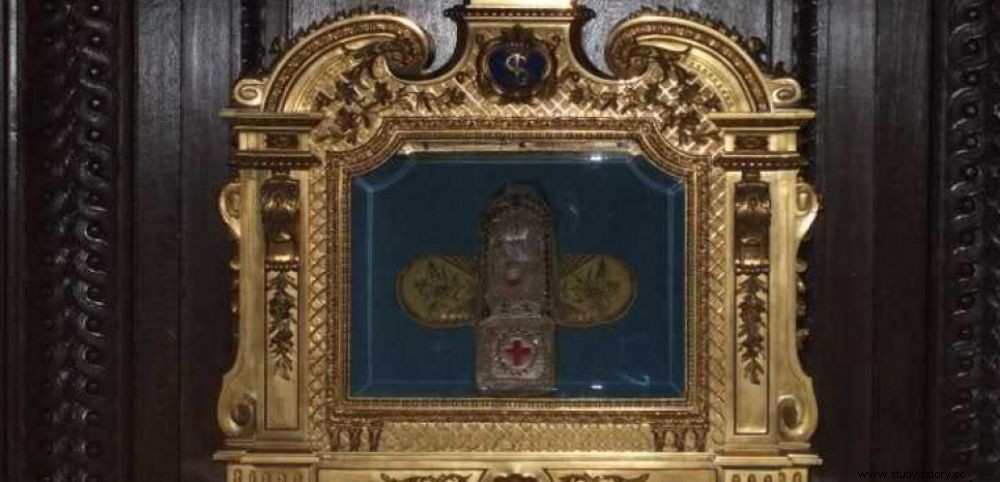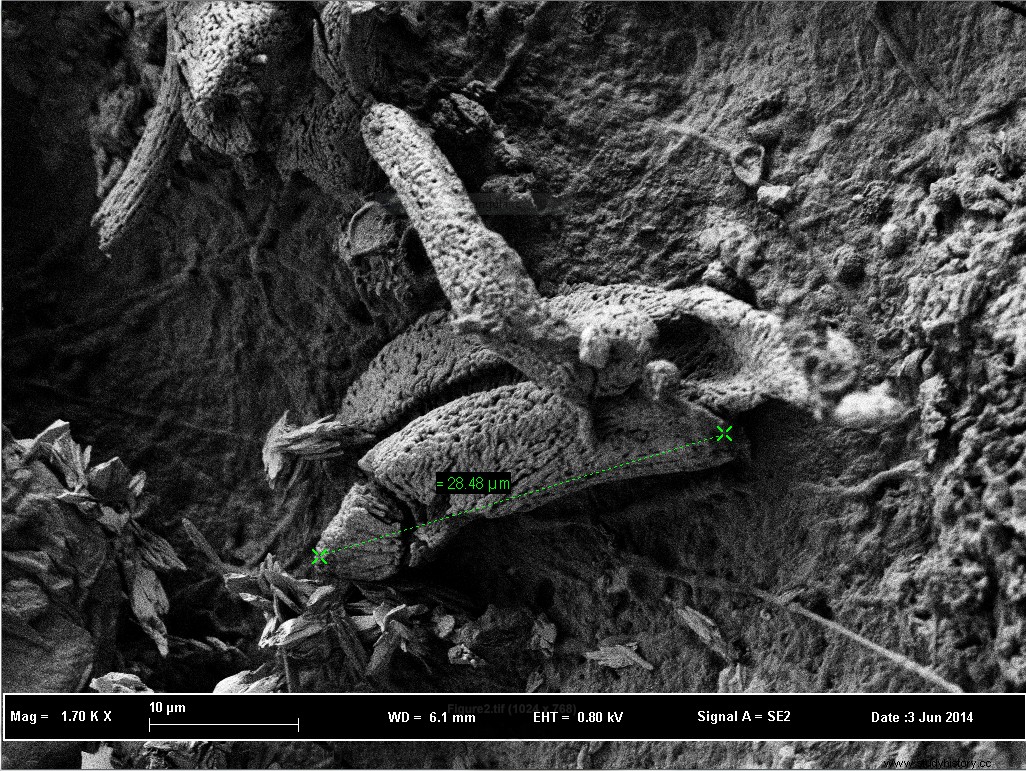 Reliquary in which were the remains of the viscera of Saint-Louis, King of France.
Reliquary in which were the remains of the viscera of Saint-Louis, King of France. Typhus, plague, dysentery? History is not very clear on the causes of the death of Saint Louis, who died at the age of 56 in front of Tunis (Tunisia) in 1270 during the 8 e crusade. But these cold cases Historical ("unresolved cases") fascinate Philippe Charlier. This paleopathologist, known for having appraised the mummified head of Henri IV, loves to delve into the bowels of history, both literally and figuratively. For several years, he has been using forensic anthropology and new technologies to unravel centuries-old puzzles. This is how he became interested in the health of King Louis IX (1226-1270), better known as Saint Louis, by analyzing… the remains of his entrails. In a recent article published in Forensic Science, Medicine and Pathology* , the researcher explains how he was able to recover 2 grams of the royal viscera during the official scientific identification of the king's relics carried out at the time of the 800 e anniversary of the sovereign's birth (2014).
King Saint Louis had a parasitic disease
When the sovereign died in front of Tunis, the question arose of the repatriation of the body. Impossible indeed to bring it back to France because of the length of the journey and the heat causing rapid decomposition. Also, according to a custom used in particular for German knights who died in crusade, the corpse was boiled in wine. A process of "excarnation" intended to separate the bones and the flesh... The former were then deposited in boxes and the latter in bags coated with pitch. Then, the relics took the sea for Sicily, over which then reigned Charles of Anjou (1227-1285), brother of the deceased. The viscera were to be deposited at the Benedictine Abbey of Monreale, near Palermo — where they were kept for 600 years — while the bones and other organs continued their journey to the basilica of Saint-Denis (Seine-St- Denis) and its royal necropolis. It is a small sample of these Palermitan remains that Philippe Charlier was able to analyze (read the box ).
 Image caption:Scanning electron microscope view of an adult schistosome (flatworm) found in mummified intestines of Saint Louis (magnified x1700) Credit:Philippe Charlier
Image caption:Scanning electron microscope view of an adult schistosome (flatworm) found in mummified intestines of Saint Louis (magnified x1700) Credit:Philippe Charlier
Thanks to very high resolution images obtained using a scanning electron microscope (SEM), Philippe Charlier and his colleagues were able to demonstrate that Louis IX was in fact suffering from a parasitic disease. A severe form of schistosomiasis indicated by a large presence of adult male schistosomes (Schistosoma haematobium) originating from the Mediterranean basin, Africa and the Near East*. This parasitosis implies that Saint-Louis was in a generally weakened state before arriving in Tunis, the infestation being prior to his landing in North Africa on July 17. The King of France indeed died barely four weeks later:the schistosomes therefore did not have time to reach maturity since this requires seven weeks after the transcutaneous infestation. "It is likely that Saint Louis was infested before, when he was taken prisoner at Damietta, in the Nile delta, in 1250, or during the following four years, when he was at Acre, Caesarea or Jaffa" , believes Philippe Charlier. Certainly, parasitosis does not explain the death of the sovereign, still enigmatic to this day. But this study provides additional information.
Wanderings of a relic
After being kept for 600 years in Sicily, the royal viscera of Saint Louis left the island in 1861, in the suitcases of François II de Bourbon-Siciles, (last king of the Two Sicilies) driven out by the revolutionaries of Garibaldi. In 1894, before his death, they were entrusted to Cardinal Lavigerie (Archbishop of Algiers and Carthage, founder of the Order of the White Fathers) to return to North Africa, the place where Louis IX died. It is there that, placed in a reliquary, they will be offered to the cathedral of Carthage in May 1890 during its consecration, before being transferred in 1965 to the Sainte-Jeanne d'Arc church in Tunis. The entrails of the king left North Africa in 1985 to be deposited at the bishopric of Saint-Denis in 1985, then at the Saint-Louis cathedral in Versailles in 1999.
* Schistosomiais in the mummified viscera of Saint Louis (1270 AD) , Forensic Sci.Med.Pathol, Ph. Charlier, F. Bouchet, R. Weil, B. Bonnet.
READ ALSO.
Robespierre regains his head. And his illnesses. The revolutionary suffered from sarcoidosis:the medical examiner Philippe Charlier made this diagnosis thanks to his reconstructed face and the testimonies of his contemporaries.
Henri IV's head makes those of the experts spin. The pathologist Philippe Charlier had authenticated the relic. A new study has again challenged this result. The controversy continues.
